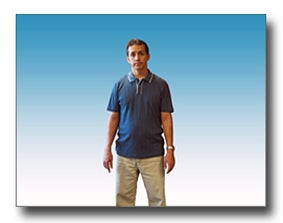Welcome back! Today, I will give an early perspective on the evaluation questions so that I can use these questions to mould my film opening.
IN WHAT WAYS DOES YOUR MEDIA PRODUCT USE, DEVELOP OR CHALLENGE FORMS AND CONVENTIONS OF REAL MEDIA PRODUCTS?
This question is important to think about as it allows us to think about how real media products compare to our product and to see if we have successfully challenged the conventions of the genre. At this moment in time, I can use this question as a helpful reminder that, I do need to challenge, use or even develop the conventions used for the thriller genre,
HOW DOES YOUR MEDIA PRODUCT REPRESENT PARTICULAR SOCIAL GROUPS?
This is a question that can help us in the planning phase of the product as we need to represent social groups within it ,for example; Gender, Sexuality, Race, Religion. In which we need to standby throughout the whole process of making this film opening.
WHAT KIND OF MEDIA INSTITUTION MIGHT DISTRIBUTE YOUR MEDIA PRODUCT AND WHY?
This is not important at this moment in time as distribution is after the product has been produced.
HOW DID YOU ATTRACT/ADDRESS THE AUDIENCE?
When planning, we need to think about how we are going to bring our audience into the film and to be attracted to it, in which we need to make sure that the film contrasts to the target audience so that they will not get bored of the film opening.
WHAT HAVE YOU LEARNT ABOUT TECHNOLOGIES FROM THE PROCESS OF CONSTRUCTING THIS PRODUCT?
This question can only really be answered at the end of the project, however I can always note down when I use certain equipment and certain editing techniques etc as I use them so that I have a clear record of the process of making this film opening.
LOOKING BACK AT YOUR PRELIMINARY TASK, WHAT DO YOU FEEL YOU HAVE LEARNT IN THE PROGRESSION FOR IT TO THE FULL PRODUCT?
At the end of the project, We will have more of a understanding of equipment and techniques in which we can contrast against our preliminary task. Therefore, it is important we learn different techniques so that I can contrast the basic skill that I used to and still have, to the more advanced skill by the end of the project.
Next time: ...
IN WHAT WAYS DOES YOUR MEDIA PRODUCT USE, DEVELOP OR CHALLENGE FORMS AND CONVENTIONS OF REAL MEDIA PRODUCTS?
This question is important to think about as it allows us to think about how real media products compare to our product and to see if we have successfully challenged the conventions of the genre. At this moment in time, I can use this question as a helpful reminder that, I do need to challenge, use or even develop the conventions used for the thriller genre,
HOW DOES YOUR MEDIA PRODUCT REPRESENT PARTICULAR SOCIAL GROUPS?
This is a question that can help us in the planning phase of the product as we need to represent social groups within it ,for example; Gender, Sexuality, Race, Religion. In which we need to standby throughout the whole process of making this film opening.
WHAT KIND OF MEDIA INSTITUTION MIGHT DISTRIBUTE YOUR MEDIA PRODUCT AND WHY?
This is not important at this moment in time as distribution is after the product has been produced.
HOW DID YOU ATTRACT/ADDRESS THE AUDIENCE?
When planning, we need to think about how we are going to bring our audience into the film and to be attracted to it, in which we need to make sure that the film contrasts to the target audience so that they will not get bored of the film opening.
WHAT HAVE YOU LEARNT ABOUT TECHNOLOGIES FROM THE PROCESS OF CONSTRUCTING THIS PRODUCT?
This question can only really be answered at the end of the project, however I can always note down when I use certain equipment and certain editing techniques etc as I use them so that I have a clear record of the process of making this film opening.
LOOKING BACK AT YOUR PRELIMINARY TASK, WHAT DO YOU FEEL YOU HAVE LEARNT IN THE PROGRESSION FOR IT TO THE FULL PRODUCT?
At the end of the project, We will have more of a understanding of equipment and techniques in which we can contrast against our preliminary task. Therefore, it is important we learn different techniques so that I can contrast the basic skill that I used to and still have, to the more advanced skill by the end of the project.
Next time: ...





















